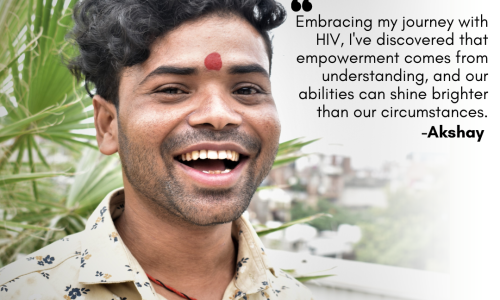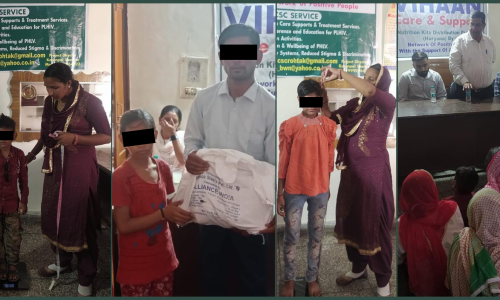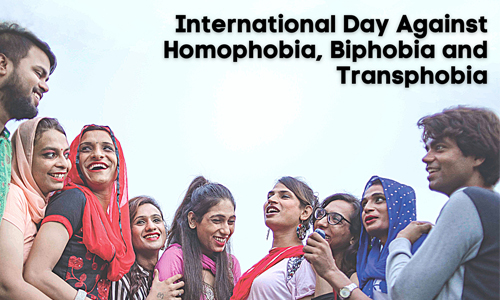
5 reasons why supporting maternal and child health is key to eliminating HIV
1. HIV/AIDS is the leading cause of death among women of reproductive age around the world. (UNAIDS Report 2020) Living with HIV means an increased risk of co-infections for all, however, for women, pregnancy and HIV both can increase the risk of opportunistic infections that can complicate their health.
2. Mother-to-child transmission is one of the leading reasons why children are infected with HIV. In 2019, an estimated 150,000 children became HIV positive, globally (UNAIDS Report 2020). In India, the national programme for preventing vertical transmission of HIV started in 2002, however, it is only in recent years that the services have been scaling up in reach. In 2019, out of 30 million pregnant women tested for HIV, 22,000 women were found positive and among those found HIV positive, only 61% were successfully linked to ART, treatment for HIV. (Data: NACO Report 2019) This percentage has to increase if we want to avert vertical transmission of HIV. Furthermore, even though institutional deliveries in India has improved from 47% in 2007-8 to 78.9% in 2015-16, for a big chunk of women delivering at home without skilled attendance at birth the risk of HIV transmission from mother to child remains high. (Data: Annual Report 2019-20, Ministry of Health & Family Welfare)
3. Early diagnosis and treatment of infants exposed to HIV are important. According to National AIDS Control Organisation, 86% of the infants born with HIV were initiated on antiretroviral prophylaxis but only 23% were tested for HIV before eight weeks of age. Ensuring mother and child living with HIV continue to adhere to the treatment regimen (ART) is key to improving health and lowering the risk of further transmission of HIV. In addition, prevention of unintended pregnancies among HIV positive women as part of sexual and reproductive health can lead to fewer infants born to mothers living with HIV and a potentially smaller number of infants born with HIV.
4. Women and children account for more than half of the total HIV population in India. The impact of HIV is far more severe on women and children with economic and social disadvantages. Especially women and girls are disproportionately affected by the epidemic with adverse psychological, social and financial consequences. It is important to ensure they have access to HIV testing, treatment and care. Efforts to ensure and improve treatment adherence is important too.
5. Like any other crisis, COVID-19 again has impacted women and children disproportionately. According to a recent report by WHO, Almost half (46%) of the world’s 1.7 million children living with HIV were not on treatment in 2020 while 150 000 children were newly infected with HIV (WHO report). We cannot let COVID-19 stall our efforts to eliminate and curb HIV. Food scarcity due to the COVID-19 crisis is a rising threat to the progress we were making in curbing HIV. This is likely to escalate into the inadequate nutritional intake and a rise in prevalence of underweight especially among women and children living with HIV.
End AIDS India is a campaign by India HIV/AIDS Alliance to create awareness and mobilise resources. Our organisation is at the forefront of HIV response for the last 20 years, as one of the trusted NGOs. We are here to support and promote better health for women and children living with HIV.
Please join the campaign, join the movement and help India become HIV free.
Written by: Tara Rana
Recent Blog

Empowering Lives Overcoming HIV Misinformation with Determination and Hope:
At 22 years old, Akshay firmly believes that life revolves around the lessons you acquire and the abilities
Read More...
22 Aug 2023

Building an Inclusive World: Empowering the Trans Community Together:
Hi, I am Radhika. I face many challenges as a Trans woman when it comes to finding my
Read More...
20 Jul 2023

Empowering Young Warriors: Nutrition Kits for Children Living with HIV:
We're thrilled to share the success of our recent nutrition kit distribution to children living with HIV (CLHIV)
Read More...
12 Jul 2023

The Struggle of Embracing Identity International Day Against Homophobia Transphobia and Biphobia:
"I've never had an interest in fading into the background and becoming invisible. Let's start with this powerful
Read More...
17 May 2023
